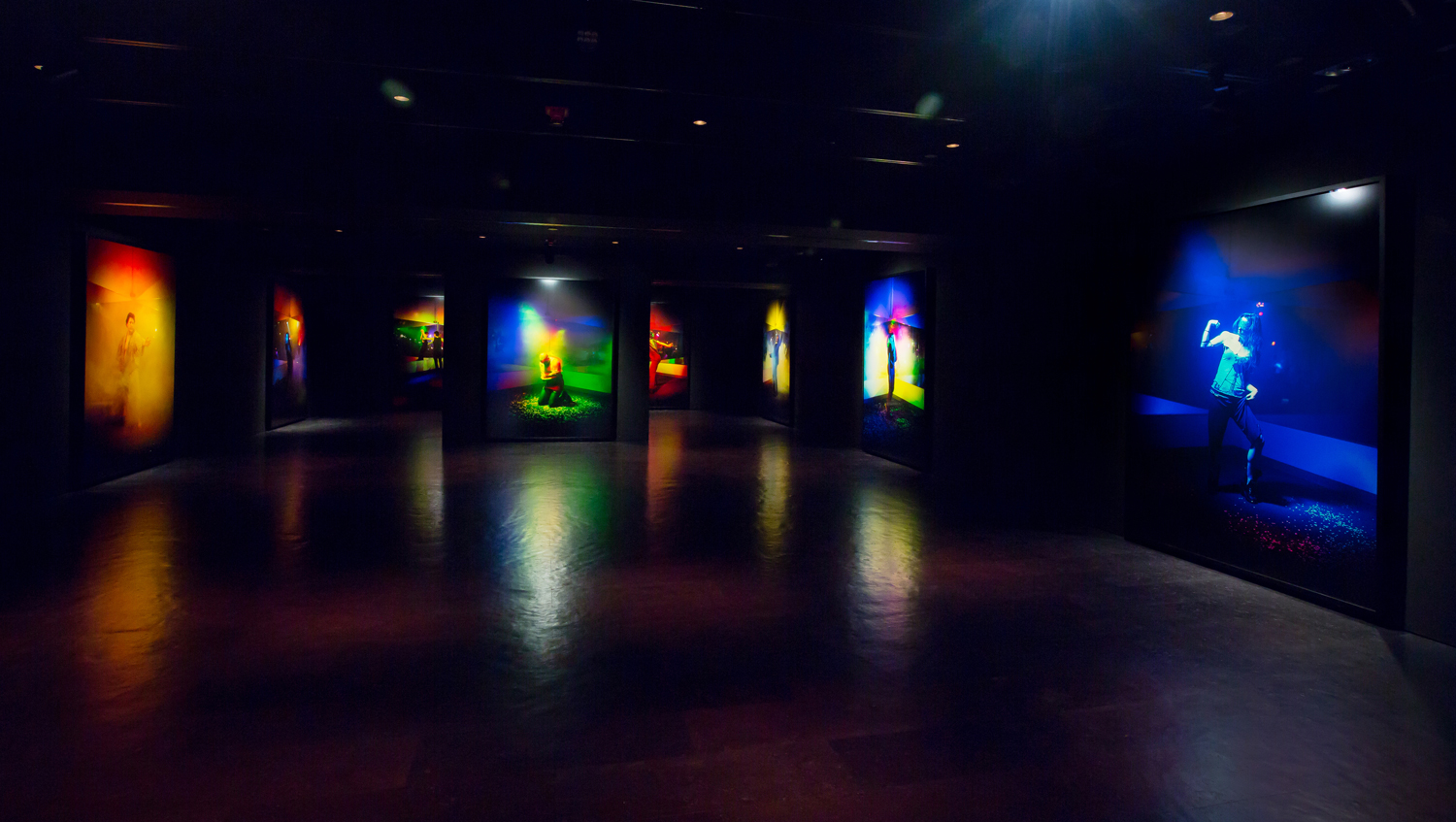Shows
Amit Desai: “Transcendance”



According to oneirology—the scientific study and interpretation of dreams—dreams are emotional, subconscious manifestations of processing cognitive experiences. Indian-American photographer Amit Desai has long since concerned himself with the perception of reality and that of dreams. He draws from the Hindu belief that the existence of reality is never separate from the self, wherein all real-life experiences are projections of individual, emotional conditions. His most recent works are a culmination of a ten-year journey that Desai undertook in pursuit of studying American “realities” and self-reflective “dreams,” a desire which later became cemented in the artist’s mind following the world-changing catastrophe of 9/11. He documented his experiences of traveling across all 50 states of America in an enormous body of photographic work, which was subsequently published into three artist books: America Sutra (2012); Dear God (2013); and Songs of the Road (2014).
For its inaugural exhibition, The Empty Gallery in Hong Kong is currently showcasing another photographic series by Desai called “Transcendance” (2010). Located at the edge of Aberdeen harbor on the southern side of Hong Kong island, the large gallery, with its enigmatic all-black interior, seeks to promote experimental multimedia arts, music and poetry performances, offering an obscured, contemplative hideout from the sleepless bustle of Hong Kong streets.
Instead of further exploring the poetic style of his previous documentary photographs, in "Transcendance" Desai focuses his lens on “capturing human energy,” which is shown in scenes of expressionistic dances performed by his New York peers. The 19 images of “Transcendance” depict an artificial, surreal refuge from the harsh realities of the world, much like the exhibiting gallery itself.
Upon returning home to New York City from his ten-year journey, Desai had vowed to leave behind the medium of photography, which he thought he had exhausted. Yet witnessing the psychological devastation in the aftermath of the 2008 global financial crisis inspired Desai to pick up his photographic practice once more. Inside his father’s small pill-coating factory, which was on the verge of bankruptcy at the time, Desai set up colored lights, a smoke machine, a disco ball and a boom box—channeling the essence of a prevailing, disillusioned zeitgeist through a fantastical cosmos set in a Technicolor disco.
In the images that comprise "Transcendance," soft light and a nebulous background wrap the respective protagonists in an eerie atmosphere, which is reflected in the mirrored corner behind them. In Annie (2010), the implied momentum of an arm movement of a woman donning a loose silk robe conveys the hypnotic rhythm embodied by the otherwise static photograph. Immersed in an apricot-colored light, her shaman-like dance is captured mid-motion, while her eyes appear fixated on a point far beyond the camera lens. The photograph compells the viewer to take a closer look at her inert facial expression, which contributes to an overall, bizarre sense of bodily detachment from a specific space and time.

Elsewhere, in the far end of the gallery—inside a smaller isolated space with décor similar to a gentleman’s club, with leathery armchairs and an array of assembled books on heavy wooden shelves—is the photograph John (2010). A young man with an arched back sprawls awkwardly on the floor space of Desai's father's factory, seemingly having succumbed to the pressure imposed on today's generation by downsizing economies. Without even the smoke machine to cover his naked body, the image evokes a maladroit sensation of intimate exposure and vulnerability, further enhanced by the reflection of stage lights and the camera, which stare back at the viewer through a set of wall mirrors.
Desai’s highly saturated images, intended to explore illusionary dreamscapes, are, in reality, very much connected to current reality. In an attempt to reveal the struggle of overcoming post-millennial economic and social insecurities, Desai’s dance images represent a translucent collective release of emotional energy, which resonates throughout the whole exhibition space. The abstract movements of his subjects, set against a psychedelic ambiance, speak of a colorful, escapist universe that emerge from the yearnings and anxieties of individual people. The artist’s mythical interpretation of a mindset living in today's tumultuous times calls to mind the last verse from the notable Chinese Diamond Sutra, the oldest printed book in existence that comprises Buddhist dialogues and teachings: “All conditioned phenomena are like dreams, illusions, bubbles or shadows; Like drops of dew, or flashes of lightning, Thus should they be contemplated.” Desai’s oeuvre portrays the individual’s ability to overcome crisis and touches upon humanity’s innate desire to transcend reality into the fantastical sphere of dreams.

‘Transcendance” is on view at The Empty Gallery, Hong Kong, until August 2015.







